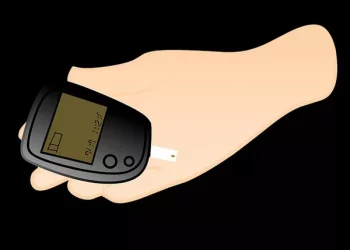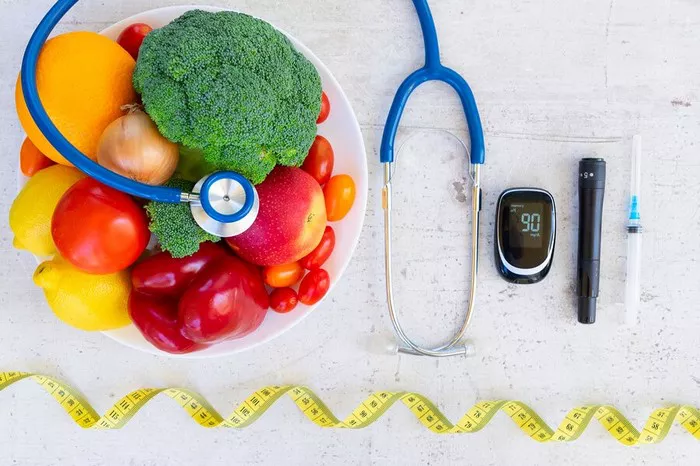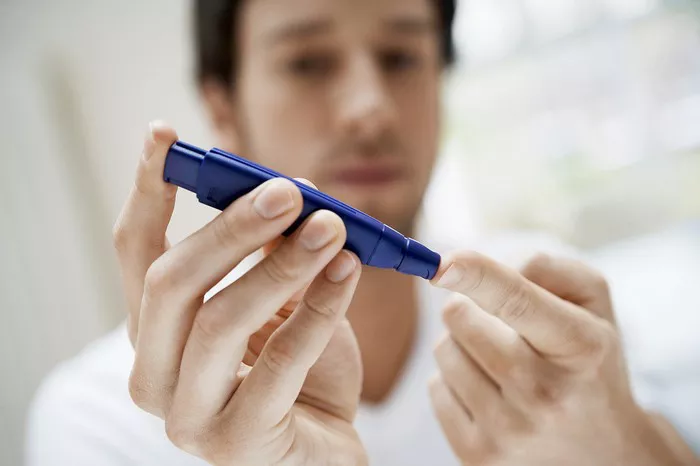In the world of diabetes management, one of the most significant aspects to consider is controlling blood sugar levels through diet. Food plays a central role in influencing blood glucose levels, and understanding which food items can help reduce sugar is vital for individuals living with diabetes or those seeking to manage their blood sugar effectively. A diabetes-friendly diet involves careful selection of foods that do not cause blood sugar spikes and, ideally, help stabilize and lower sugar levels.
This article will delve into various food items that can help reduce sugar levels, explaining their role, benefits, and the science behind their impact on diabetes. We will explore different categories of food, from whole grains and vegetables to proteins, healthy fats, and even certain herbs and spices. By understanding the power of food in controlling blood sugar, individuals can make informed decisions and adopt healthier habits.
The Importance of Diet in Managing Blood Sugar
Managing blood sugar is a crucial component of diabetes care. Inadequate blood sugar control can lead to severe complications, including nerve damage, cardiovascular disease, kidney problems, and even vision loss. Therefore, understanding how to reduce blood sugar levels through diet is essential. While insulin and other medications are often prescribed to help manage blood glucose, dietary changes can work synergistically with these treatments to help keep blood sugar levels within the target range.
The right foods can support the body’s natural insulin sensitivity, improve glycemic control, and reduce the risk of developing complications associated with diabetes. Additionally, certain foods may contain bioactive compounds that have direct effects on blood sugar levels, offering therapeutic benefits to individuals with diabetes.
Key Factors to Consider in a Diabetes-Friendly Diet
Before diving into specific food items, it’s essential to understand a few principles that guide the selection of foods that help lower blood sugar:
Glycemic Index (GI): The glycemic index measures how quickly carbohydrates in a food item raise blood sugar. Foods with a low GI (55 or lower) are generally better for managing blood sugar levels as they release glucose slowly into the bloodstream, avoiding sharp spikes.
Fiber Content: Fiber helps slow down the absorption of sugar into the bloodstream, preventing rapid spikes in blood glucose levels. Foods high in fiber, particularly soluble fiber, are especially beneficial.
Whole, Unprocessed Foods: Whole foods such as vegetables, fruits, legumes, and whole grains are less likely to cause blood sugar spikes compared to refined, processed foods. They provide more nutrients, fiber, and antioxidants.
Balance of Macronutrients: A balanced diet that includes a healthy mix of carbohydrates, protein, and fats is crucial for maintaining stable blood sugar levels. Protein and healthy fats can help regulate the absorption of carbohydrates, leading to more controlled blood sugar levels.
Top Food Items to Help Reduce Sugar Levels
1. Leafy Greens
Benefits: Leafy greens like spinach, kale, and Swiss chard are low in calories and carbohydrates, making them excellent choices for reducing blood sugar. They are also rich in fiber, vitamins, and minerals, especially magnesium, which is essential for insulin function.
Scientific Explanation: Magnesium plays a critical role in glucose metabolism and insulin sensitivity. A deficiency in magnesium has been associated with an increased risk of developing type 2 diabetes. Consuming magnesium-rich foods like leafy greens can support better blood sugar control.
How to Include in Diet: Add leafy greens to salads, soups, smoothies, or sauté them with olive oil and garlic. They are versatile and can be incorporated into almost any meal.
2. Whole Grains
Benefits: Whole grains such as quinoa, barley, oats, and brown rice are high in fiber and have a low GI compared to refined grains. They help maintain steady blood sugar levels by providing a slow and sustained release of glucose.
Scientific Explanation: Whole grains contain complex carbohydrates and fiber, which slow down the digestion and absorption of sugars. This slower release prevents sudden spikes in blood glucose and supports more stable blood sugar levels.
How to Include in Diet: Swap refined grains like white rice and white bread for whole grains. For breakfast, consider oatmeal or whole-grain toast. For lunch or dinner, opt for a quinoa or barley-based salad.
3. Beans and Legumes
Benefits: Beans, lentils, chickpeas, and other legumes are rich in both fiber and protein, which help regulate blood sugar. Their low glycemic index and high fiber content make them excellent for managing blood sugar levels.
Scientific Explanation: The fiber in beans and legumes slows the digestion process and the absorption of carbohydrates, preventing rapid blood sugar spikes. The high protein content also helps balance blood glucose by promoting satiety and reducing hunger.
How to Include in Diet: Include beans and legumes in soups, stews, salads, or as a side dish. They are versatile and can be used in both vegetarian and meat-based dishes.
4. Nuts and Seeds
Benefits: Almonds, walnuts, chia seeds, flaxseeds, and other nuts and seeds are high in healthy fats, protein, and fiber, making them excellent choices for blood sugar management.
Scientific Explanation: The healthy fats in nuts and seeds help slow down the absorption of glucose, while their high fiber content promotes better blood sugar regulation. Additionally, certain nuts, like almonds, contain magnesium, which can improve insulin sensitivity.
How to Include in Diet: Snack on a handful of nuts, sprinkle seeds on salads or yogurt, or blend them into smoothies. Be mindful of portion sizes, as nuts are calorie-dense.
5. Avocados
Benefits: Avocados are rich in monounsaturated fats, fiber, and various vitamins and minerals, including potassium, which helps regulate blood sugar levels.
Scientific Explanation: Monounsaturated fats help improve insulin sensitivity, which is crucial for diabetes management. The fiber in avocados also slows the absorption of sugar, preventing rapid blood sugar spikes.
How to Include in Diet: Enjoy avocados in salads, as a topping for toast, or blended into smoothies. They are also great as a healthy fat addition to sandwiches or wraps.
6. Berries
Benefits: Berries like strawberries, blueberries, raspberries, and blackberries are rich in antioxidants, fiber, and vitamin C. They have a low glycemic index, making them an ideal fruit choice for people with diabetes.
Scientific Explanation: The antioxidants in berries help reduce oxidative stress, which is often elevated in individuals with diabetes. Additionally, their fiber content slows the absorption of sugar and helps maintain stable blood glucose levels.
How to Include in Diet: Berries can be added to yogurt, smoothies, salads, or eaten as a healthy snack. They are naturally sweet and can satisfy sugar cravings without causing blood sugar spikes.
7. Cinnamon
Benefits: Cinnamon is a powerful spice known for its ability to improve insulin sensitivity and lower blood sugar levels. It contains compounds like cinnamaldehyde that can help regulate glucose metabolism.
Scientific Explanation: Several studies have shown that cinnamon can increase insulin sensitivity and reduce blood sugar levels in people with type 2 diabetes. It may also help reduce inflammation, which is often elevated in diabetic individuals.
How to Include in Diet: Sprinkle cinnamon on oatmeal, smoothies, or baked goods. You can also add it to coffee or tea for a natural, sugar-free flavor boost.
8. Apple Cider Vinegar
Benefits: Apple cider vinegar (ACV) has been shown to improve insulin sensitivity and help lower post-meal blood sugar levels. Its acetic acid content may help reduce the absorption of sugars in the digestive tract.
Scientific Explanation: ACV helps lower blood sugar by increasing insulin sensitivity, which enhances the body’s ability to process glucose. It can also slow gastric emptying, leading to a more gradual rise in blood sugar after meals.
How to Include in Diet: Dilute 1-2 tablespoons of apple cider vinegar in a glass of water and drink it before meals. You can also use it in salad dressings or marinades.
9. Sweet Potatoes
Benefits: Sweet potatoes are a nutritious, low-GI carbohydrate source that provides fiber, vitamins, and antioxidants. Unlike white potatoes, sweet potatoes are less likely to cause rapid spikes in blood glucose.
Scientific Explanation: The fiber in sweet potatoes slows down glucose absorption, helping to maintain stable blood sugar levels. Additionally, their antioxidants, such as beta-carotene, have anti-inflammatory properties that can benefit individuals with diabetes.
How to Include in Diet: Roast or bake sweet potatoes as a side dish, mash them, or use them in soups and stews. They can also be enjoyed as a healthier alternative to white potatoes.
10. Turmeric
Benefits: Turmeric, particularly its active compound curcumin, has powerful anti-inflammatory and antioxidant properties. It has been shown to reduce insulin resistance and improve blood sugar control.
Scientific Explanation: Curcumin has been found to reduce the levels of inflammatory markers in the body, which can help improve insulin sensitivity. It also has the potential to reduce oxidative stress, which is often elevated in individuals with diabetes.
How to Include in Diet: Add turmeric to curries, soups, smoothies, or even hot water for a soothing drink. Combining turmeric with black pepper enhances the absorption of curcumin.
Conclusion
Reducing blood sugar is not solely reliant on medication but is also significantly influenced by diet. Incorporating certain foods into a diabetes-friendly eating plan can help manage blood glucose levels effectively. The food items discussed in this article—leafy greens, whole grains, beans, nuts, seeds, avocados, berries, cinnamon, apple cider vinegar, sweet potatoes, and turmeric—are not only nutrient-dense but also have scientifically proven benefits in regulating blood sugar.
By making conscious choices and focusing on low-GI, high-fiber foods, individuals with diabetes can achieve better blood sugar control, improve overall health, and reduce the risk of complications. While these foods are beneficial, it is important to adopt a balanced diet and consult with a healthcare provider or registered dietitian for personalized advice.
Through the right combination of foods, lifestyle changes, and proper medical guidance, it is possible to manage diabetes effectively and lead a healthy, fulfilling life.
Related topics:
What You Should Eat to Prevent Diabetes






















